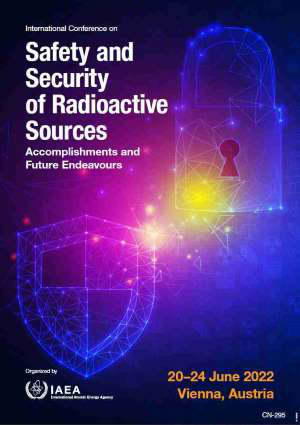Speaker
Description
Radioactive sources are being extensively used in medicine, agriculture, industry, research & education and other sectors in Bangladesh. The usage of radioactive sources is rising day by day with the socio-economic development of the country. The Bangladesh Atomic Energy Regulatory Act-2012 (Chapter IV, vide 29-31) & Nuclear Safety and Radiation Control Rules-1997 of Bangladesh (vide 17-19) mentioned that radioactive sources to be managed during usage or storage at the facility in such a way that minimize the harmful effects from ionizing radiation on radiation worker, public and the environment. The purpose of safe handling or storage of the radioactive sources in a facility is to protect the people and the environment from unnecessary radiation hazard. Atomic Energy Centre Dhaka (AECD) is a multi-disciplinary research & development (R&D) institute which is situated in the busiest place of the capital city. AECD was established within the Dhaka University campus in 1964. At that time, AECD was the only nuclear R & D institute in the then East Pakistan where various types of theoretical and experimental nuclear research had been conducted. AECD has various types of low and high activity radioactive sources which are required for rendering services, training and education & research purposes. The low activity radioactive sources used for equipment calibration and high activity radioactive sources (192Ir) used for industrial radiography purposes. AECD also has disused radioactive sources storage room. Radioactive sources of AECD were kept in the lead & concrete shielding structures for minimizing hazard to radiation worker, public and the environment. AECD personnel also send to other institutes of the country for ensuring safety of the radioactive sources on demand. Emergency preparedness and response of AECD has been developed and implemented. Proper fire protection systems (smoke detectors, fire extinguishers) have been installed at various locations of the AECD campus. Safety report has to submit to the regulatory body in order to renew the license of the AECD in every year. Radiation Protection Officer (RPO) of AECD (two personnel) have been approved from the regulatory body in order to ensure the safety of the radiation worker, public & the environment while operating radiation generating equipments, handling radioactive sources and disused radioactive sources storage room. RPOs have adequate knowledge on radiation safety and they used to train the workers of AECD through training courses, seminars, on the job training for creating radiation awareness and for improving knowledge on radiation safety. Security and access control has been maintained at radioactive source rooms and disused radioactive sources storage room to avoid the unauthorized access of workers, public and the unauthorized removal of radioactive sources. Continuous indoor radiation monitoring of AECD campus is being conducted using the Thermoluminescent Dosimeter (TLD) for ensuring the safety of the radiation worker, public and the environment from unnecessary radiation hazard (if any) releasing from the radioactive sources of the AECD. Real-time radiation monitoring is also being carried out using digital portable radiation monitoring devices in & around the AECD campus for detection of any unusual event arising from the radioactive sources. The estimated mean annual effective dose to the public in & around the AECD campus was 0.256 ± 0.042 mSv, which is lower than the annual dose limit (1 mSv) set by the Nuclear Safety and Radiation Control Rules-1997 of Bangladesh and recommendation from the International Commission on Radiological Protection. The real-time radiation dose rate in & around the AECD campus is comparable to the other parts of the Dhaka city. Excess life-time cancer risk (ELCR) on public around the AECD campus was estimated based on the real-time radiation monitoring data and mean was 1.060 Χ 10-3.
| Country OR Intl. Organization | Bangladesh |
|---|

